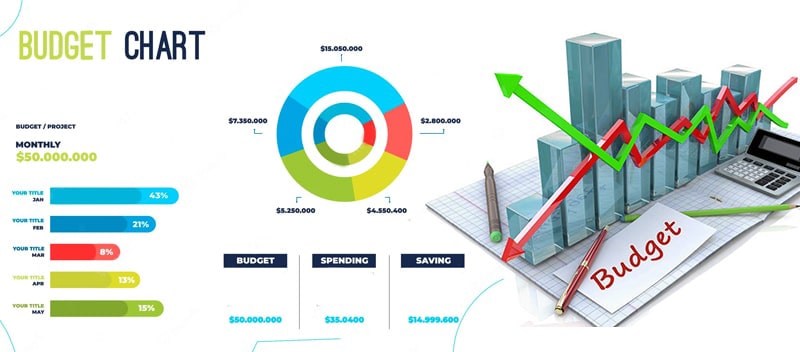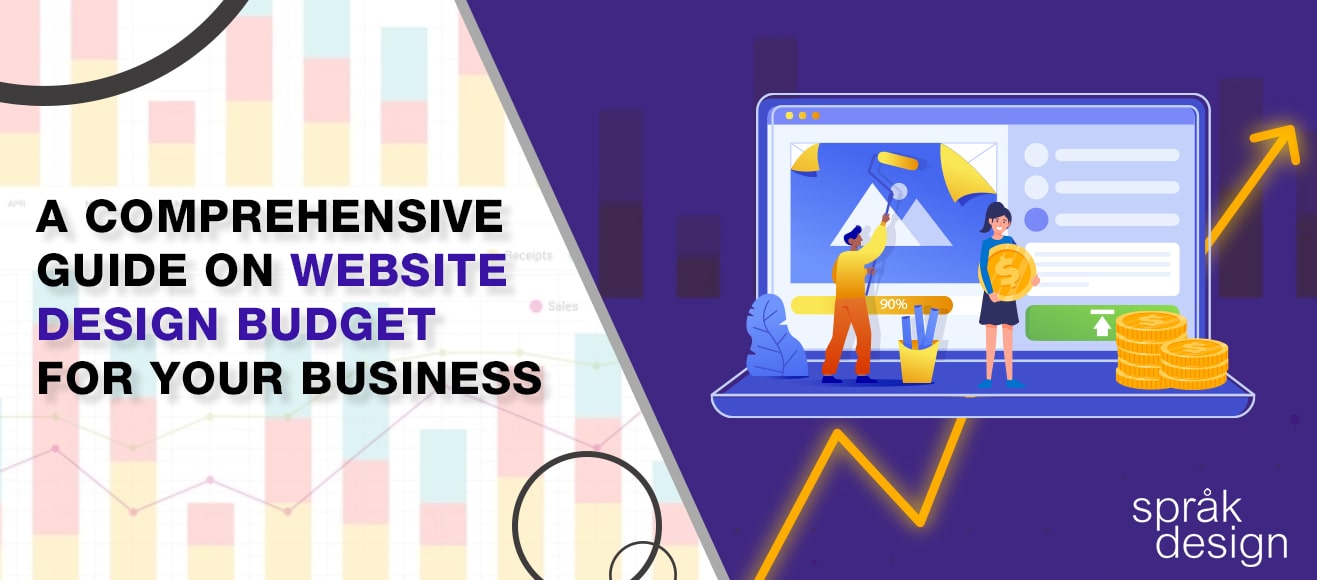A Comprehensive Guide On Website Design Budget for Your Business
Last Update : 28 March 2023
As a company owner, you are aware of how important it is to have a website that functions well and looks great.
Setting a design budget is one of the most crucial steps in developing a website that meets your goals, but it can be a challenging process.
In this comprehensive guide, we’ll examine some of the best website design company that can help you create the perfect website, as well as the crucial factors that should be taken into account when setting a budget for your company’s website design.
What is a Design Budget?

A design budget is a strategy that specifies how much cash your company may set aside for website design. Your spending plan should account for all expenses related to designing, developing, and launching your website, as well as any continuing upkeep and updates. To avoid overspending or underspending and to achieve the maximum return on your investment, it is imperative to establish a design budget.
Website design budget for your business can vary based on factors such as functionality, design, content, and maintenance. Basic website designs for small business can cost a $500 to $2000, while more complex websites can cost $5000+ more. It’s important to research and compare different options to find the one that meets your needs and budget.
Factors to Consider When Establishing a Design Budget
When developing a design budget for your business, there are several considerations to address. Among the most important components is
Size and Complexity of your Website
It will take more time and money to develop and build a bigger, more complex website. As a result, you’ll need to raise your design budget in order to acquire the results you want.
Degree of Customization you R`equire
If you need a completely customized website with unique features and functionality in order to achieve your goals, you might need to spend extra money on design and development.
Your Desired Degree of Expertise
If you need a website that requires specialized expertise or skills, such as an e-commerce site or a site with complicated features, you may need to hire a more competent designer or firm, which can be more expensive.
Goals and Objectives of your Business
The goals and objectives of your company should be in harmony with the design budget you choose.
If the success of your business depends on the design of your website, you might need to invest more money in it.
Project’s Timeline
If you need your website to launch immediately, you could have to pay more for design and development.
By considering these factors, you may decide how much cash to provide for your design budget.
Creating a Design Budget
After taking the aforementioned elements into account, it’s time to develop a design budget for your company. Follow these steps to accomplish this:
Step 1: Define Your Website Needs
The first step in developing a budget for website design is determining the requirements of your website. In order to design an effective website, you should consider its objective, its target audience, the features you want it to provide, and its projected completion date.
You can assess the size and complexity of your website, which will affect its cost, by being aware of its requirements.
Start by defining the requirements for your website by thinking about its function. Do you wish to advertise your services, sell things online, or display your portfolio?
Consider your target audience after you have determined the goal of your website. Who is the target audience for your website, and what content or features will they require?
The features you desire for your website should then be considered. Do you require a blog, a contact form, or e-commerce capabilities?
Consider your ideal project timetable as a last step. Do you need to fulfill any deadlines or launch dates? For a workable process, you can employ the services of the best website design companies that can help you.
Step 2: Determine Your Budget
The cost of website design varies depending on the size and complexity of the website, the amount of customization, and the type of business.
Before creating a budget, it is important to consider the financial position of the company and the expected return on investment (ROI). Take into account cash flow, other costs, and business objectives. Budget adequate money to build a site that fulfills demands and advances objectives, but doesn’t overpay.
Step 3: Allocate your Budget:
After that, divide your budget among the elements we have already covered. You may need to budget additional money for design and development, for instance, if you want a fully personalized website.
Step 4: Break Down your Budget:
After you’ve allotted it, divide your money into several areas, such as design, development, hosting, and upkeep.
This will make it easier for you to monitor your expenditures and make sure you don’t go beyond your means in any one area.
Step 5: Research Website Design Companies
It is important to shop around to select a website design company that fits your budgetary needs before making a decision.
Look for businesses with expertise in your sector or niche that provide a variety of services and have a good reputation.
Search for local companies online to learn more about their offerings and backgrounds, and read internet evaluations left by previous customers to get an idea of their level of customer service and the caliber of their work.
Additionally, ask other companies or trade organizations for recommendations and visit the websites of the businesses on your list to find out more.
Step 6: Request Quotes
Request quotes from website design companies to compare pricing and services. Be sure to provide detailed information about your website needs, look for transparency in pricing and timelines, and consider the level of customer support.
Review the quotations carefully after receiving them to compare prices and services. To learn more about prior customers’ experiences, request case studies or references from them.
Step 7: Consider the Total Cost of Ownership
The cost of ownership for website design should be taken into account when setting a budget. This includes both the up-front expenditures of website creation and continuing expenses like hosting, upkeep, and updates.
To determine the total cost of ownership, start by asking about the continuing support and maintenance services offered by the website design businesses.
Additionally, take into account the expenses of the domain and hosting registration, as well as any related charges for website changes or upgrades. This will help create a realistic website design budget that covers all charges.
Step 8: Plan for the Future
It is important to consider the long term when creating a budget for website design. Your website is a crucial part of your company and will require upgrades and adjustments over time.
To ensure an up-to-date, useful website, think about your website’s long-term goals and how you want it to develop.
Include a budget for potential modifications or redesigns as well as continuous upkeep and maintenance. By making plans, you can ensure that your website remains functional and serves the interests of both your clients and your company.
Conclusion
Creating a budget for website design is a crucial component of every company’s digital strategy. You may develop a budget that suits your demands and aids in the achievement of your company objectives by defining your website needs, choosing your budget, researching website design providers, seeking quotations, taking into account the total cost of ownership, and making plans.
You can expand your business and maintain competitiveness in your sector with a well-designed website that caters to your client’s demands. To archive all these, Sprak Design is a reputable website design company that can help you.


